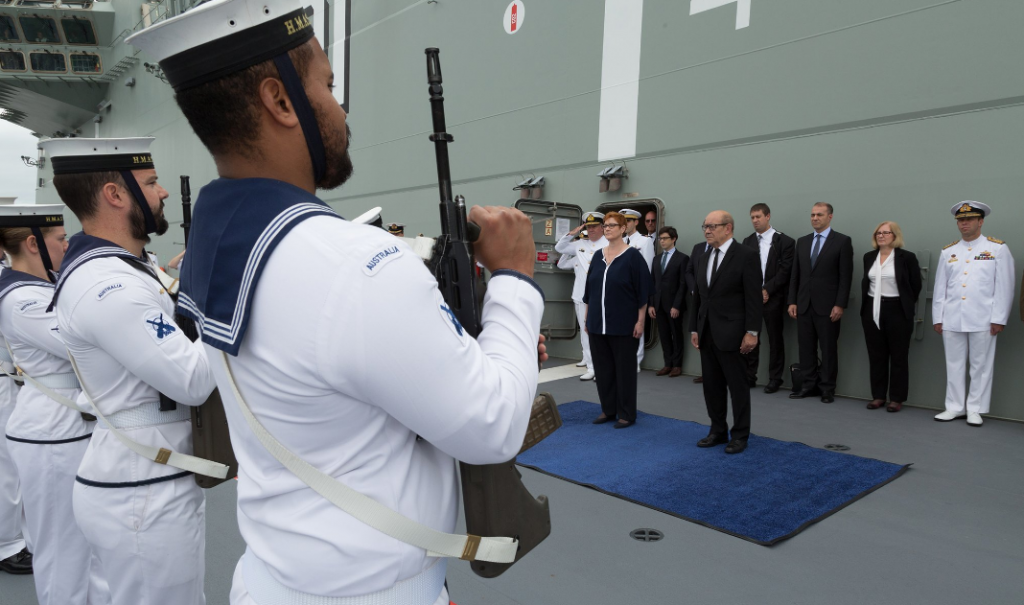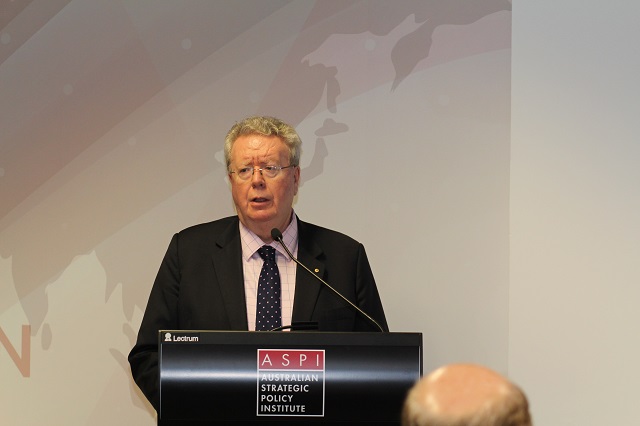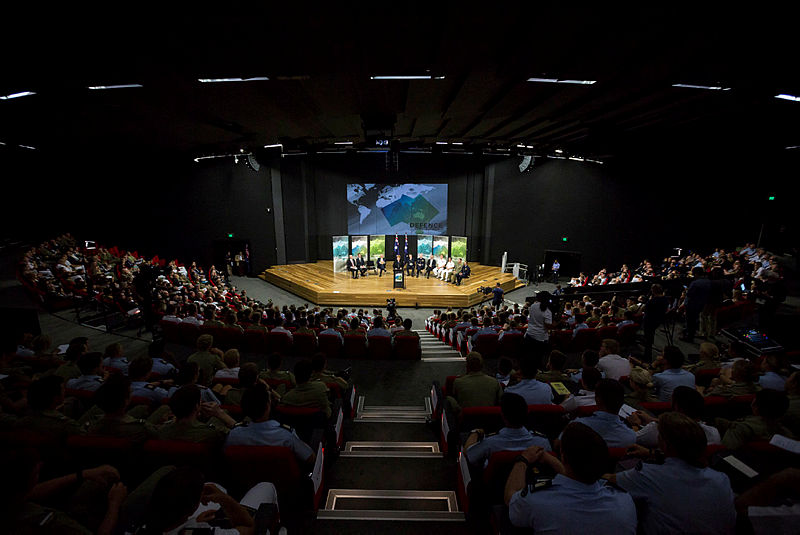What the ADF can learn from the US military response to climate change

I read Anthony Bergin’s article in The Australian last month with great interest. In it, he called for Defence to take greater action on climate change, but that view deserves further consideration.
He made the point that the US military was well ahead of their Australian counterpart when it comes to tackling climate change, highlighting the recent Presidential Memorandum and the Department of Defense Climate Directive as supporting evidence. In my upcoming book I examine US DoD’s efforts and show that its emissions have dropped almost 20% since 2008. That’s not small change either—in a bad year the total US DoD emissions are roughly one-sixth of those of the entire Australian economy.
Despite the abundance of high-level US military climate strategies (see here, here, here, here, here, here, here and here), they haven’t been without problems. A 2014 US GAO report highlighted responses to climate change were often difficult to translate into meaningful action by front-line commanders. Many base officials stated that climate data was insufficiently downscaled to be of any use. Other officials were uncertain of how to implement climate requirements since key information was missing. They found a lack of definitions, unclear building codes and design standards, and uncertainty around which climate projections to use. Climate change responses struggled to be properly integrated at the lower-levels. US military efforts can be rightly applauded, but challenges remain.
The final observation about US DoD efforts to “mainstream” climate change is that they’re about to come to a grinding halt. Despite mixed signals, President-elect Trump is appointing climate obstructionists who will seek to wind back Obama’s climate strategy. One leg of the Obama strategy involved framing climate change as a legitimate national security threat and taking executive action in the face of a hostile Congress. Obama garnered support from the wider US national security establishment with think tanks, intelligence agencies, retired US flag officers and the DoD itself all urging greater action. Politically, that lent Obama’s climate agenda a degree of credibility with voters who now understand the issue as being about more than polar bears or economic drag. Despite this, Obama’s climate security initiatives will likely be wound back, issues confused, US military leaders stifled and climate change written out of existence in the next round of US national security documents.
Climate security discourse in Australia took a similar turn under the Abbott government. With the exception of some lone voices and a couple of think tank reports, it’s largely been ignored by the security establishment. Fundamentally this can be attributed to the slowly evolving nature of the threat; it simply doesn’t fit with annual budgets, two-year appointments or five year “strategic” plans. Despite this, the issue has gained some traction and the recent speech by the Chief of Army Angus Campbell and the inclusion of climate change in the 2016 Defence White Paper are evidence of this.
But more can be done.
We need more than senior military leaders functioning as strategic advocates, as Anthony recommends. Instead, the ADF needs a strategic plan to deal with climate change: enterprise-wide, long-term with interim goals, updated every five years and nested within wider ADF sustainability, environmental and energy programs. Rather than be a flagship, the ADF Climate Strategy could commence life like the US Climate Adaptation Strategy (originally nested within their sustainability plan). That quieter approach would help with the communication strategy necessary in the hyper-sensitive political climate. In addition, appointing a climate officer could invite ridicule from a right-wing media thirsty for soft targets and, at worst, might cruel that particular officer’s career.
The ADF Climate Strategy must address both mitigation and adaptation. The ADF is the single largest government emitter at about 1.5 Mt/year—roughly the same as Telstra or just less than half that of Virgin Airlines (Australia), but larger than Fiji or Tonga, Solomon Islands, Timor-Leste, Vanuatu and Samoa combined. For the ADF to reduce emissions would mean jobs, upgrading aging infrastructure, innovation, cost effectiveness, a smaller logistical footprint and enhanced energy security. Simple, clear and bold targets are key. For example: “By 2030 the ADF will reduce estate emissions by 50%”. “By 2030 the ADF will reduce operational emissions by 50%”. Create the vision, then develop the programs to meet this. In this manner, the pursuit of a Navy biofuels program here or a wave energy installation there, are given much greater strategic context.
Adaptation is partly underway. In 2011 the ADF reviewed the risk of sea-level rise on its bases. That was followed up with a 2013 report recommending options for adaptation. From the public perspective, however, it’s questionable if the known risks have translated into greater action. So the first thing the Department should do is publicly release their reports. While ADF tends to think of itself as acting in isolation, it must think and act differently when dealing with climate change. Conducting engineering works such as raising runways or constructing sea walls might be good for the ADF, but it may generate unforeseen risks that simply shift the problem elsewhere.
Climate change remains a strategic threat of unprecedented proportions. The ADF should learn from the US experience, taking those ideas that have worked and avoiding those that missed the mark.




 The media philosophy offered in this series is the belief that in the
The media philosophy offered in this series is the belief that in the War and truth seldom sit comfortably together.
War and truth seldom sit comfortably together. The terrain of the Media Age is a networked series of places—both land and a land of the mind. The borders are ever more porous.
The terrain of the Media Age is a networked series of places—both land and a land of the mind. The borders are ever more porous.

